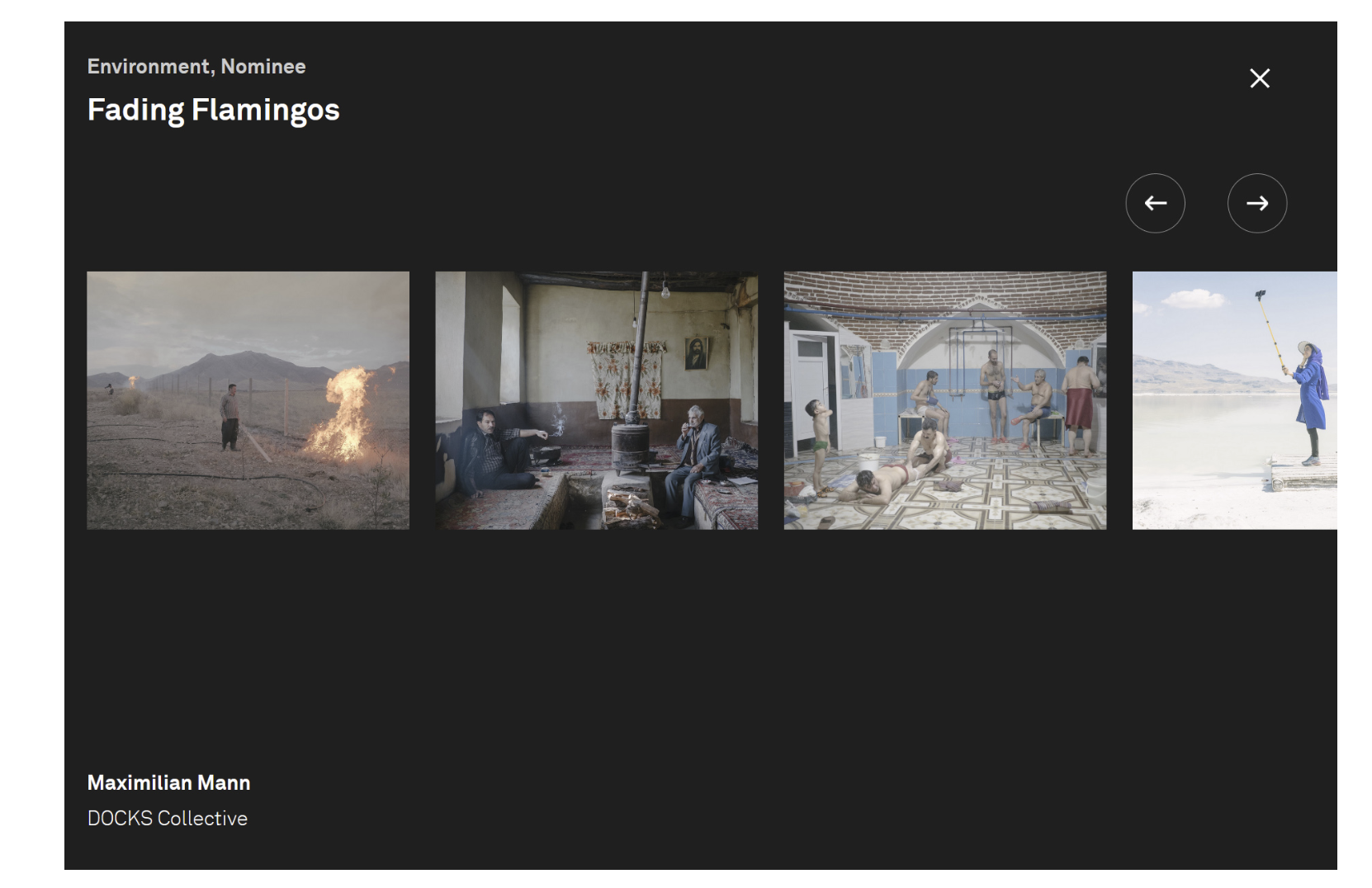A photographer has aired their concerns over the work of a 2020 World Press Photo nominee.
World Press Photo (WPP) nominees always generate conversation and debate. In an article published by Kaveh Rostamkhani, Iranian photographer, Solmaz Daryani, feels ethics have been broken by one of the WPP nominees. Maximilian Mann was nominated in the Environment category for his series, Fading Flamingos. However, Daryani has expressed concerns that many of the images submitted by Mann are too similar for comfort to a project she created a few years earlier.
The Accusation
Back in 2014, Daryani started a project that focused on Lake Urmia in Iran, the world’s sixth-largest salt lake. Several photographers have tackled this location due to the mismanagement of the site, which has left many fearing the lake will eventually dry up. A topic so sensitive, especially in a time where our environment is on the tip of every conversation, it’s natural photojournalists would be attracted to doing such a project.
German photographer, Mann, started his work on Lake Urmia a few years later. Naturally, when photographers work on the same location, photographs will look similar. However, Daryani told Rostamkhani she felt the similarities were close enough to suggest Mann had outright copied her work. “It is very unethical and unfair to reproduce this many images of my story one by one.”
Let’s take a look at the photos.
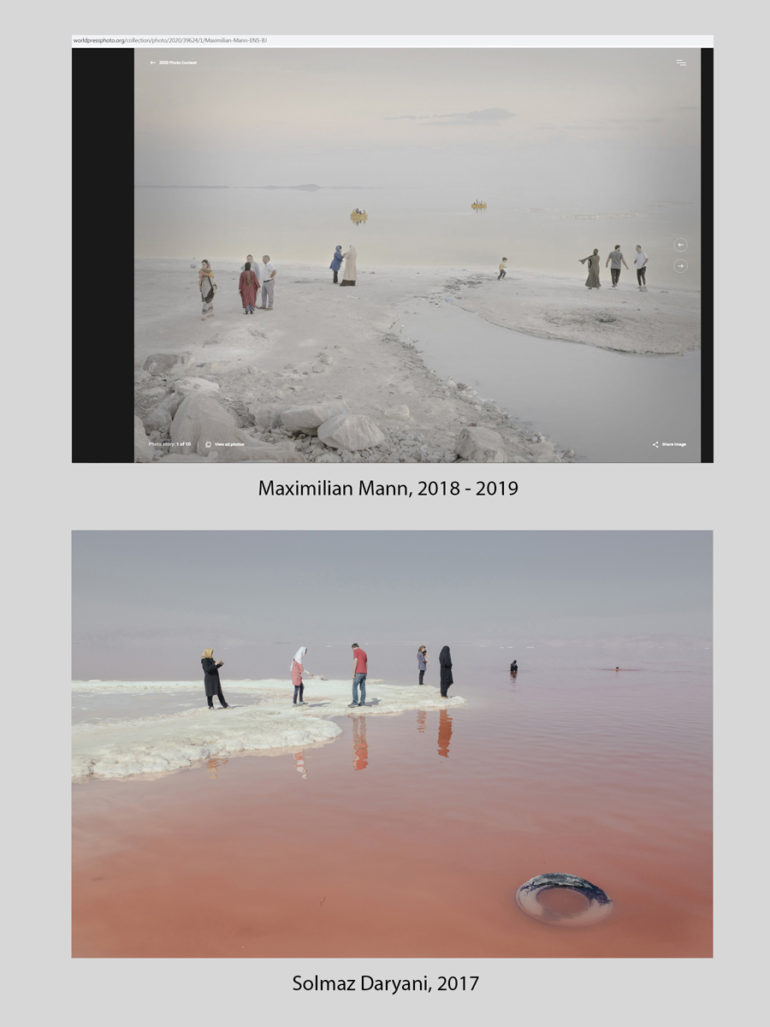
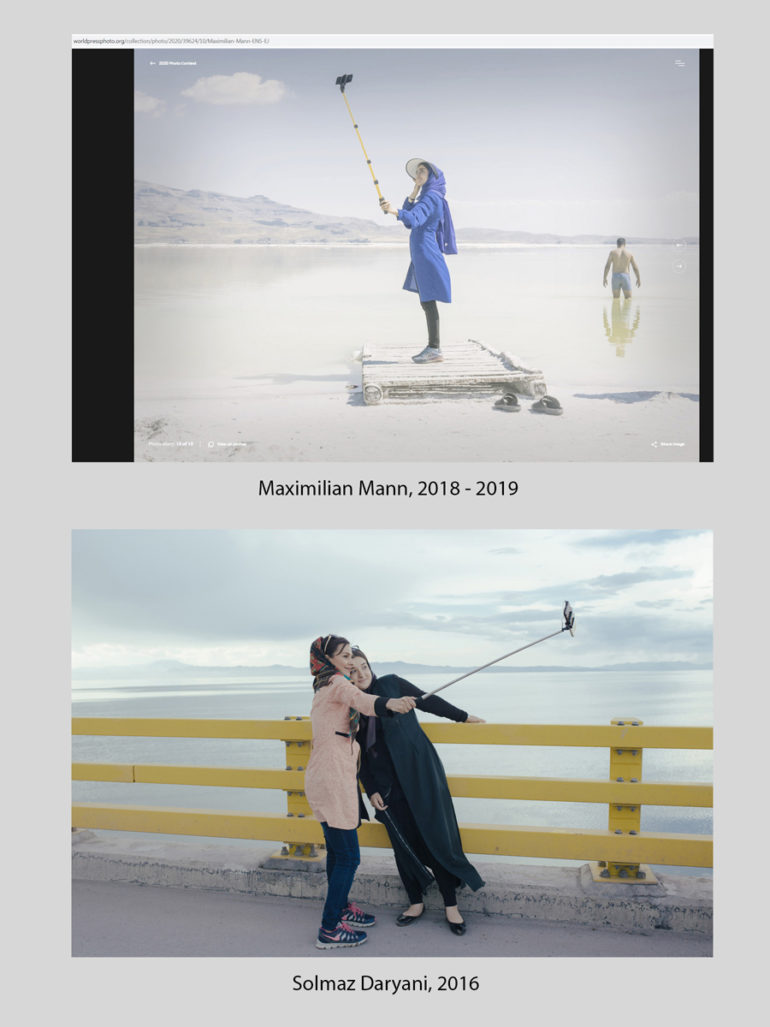
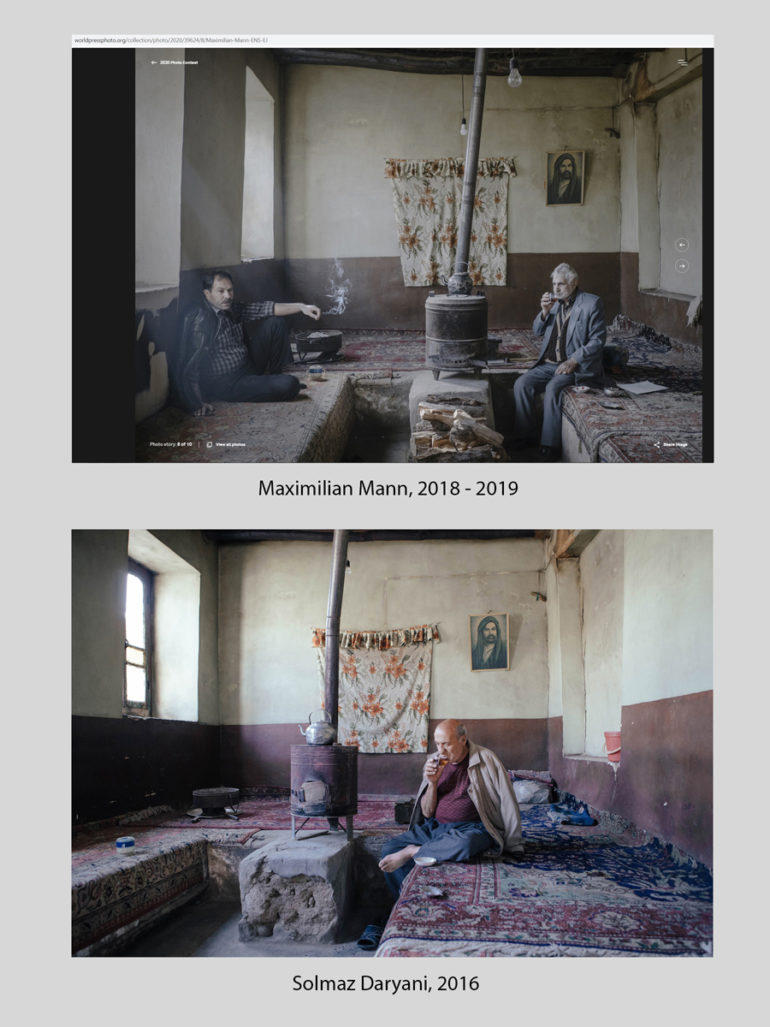
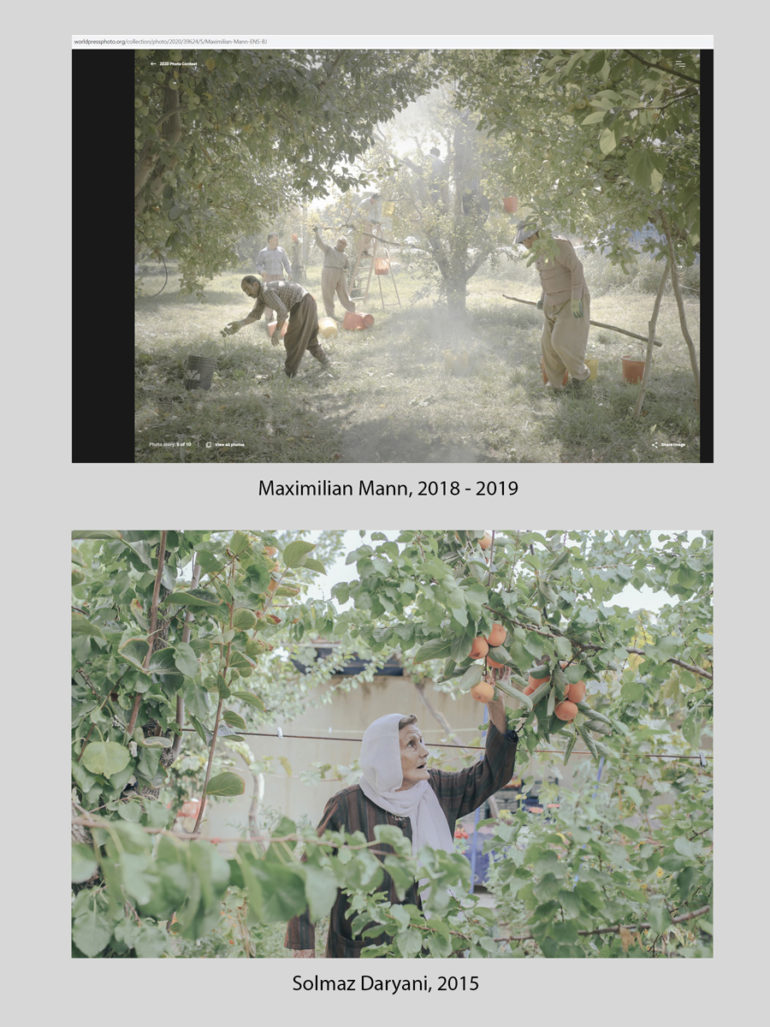
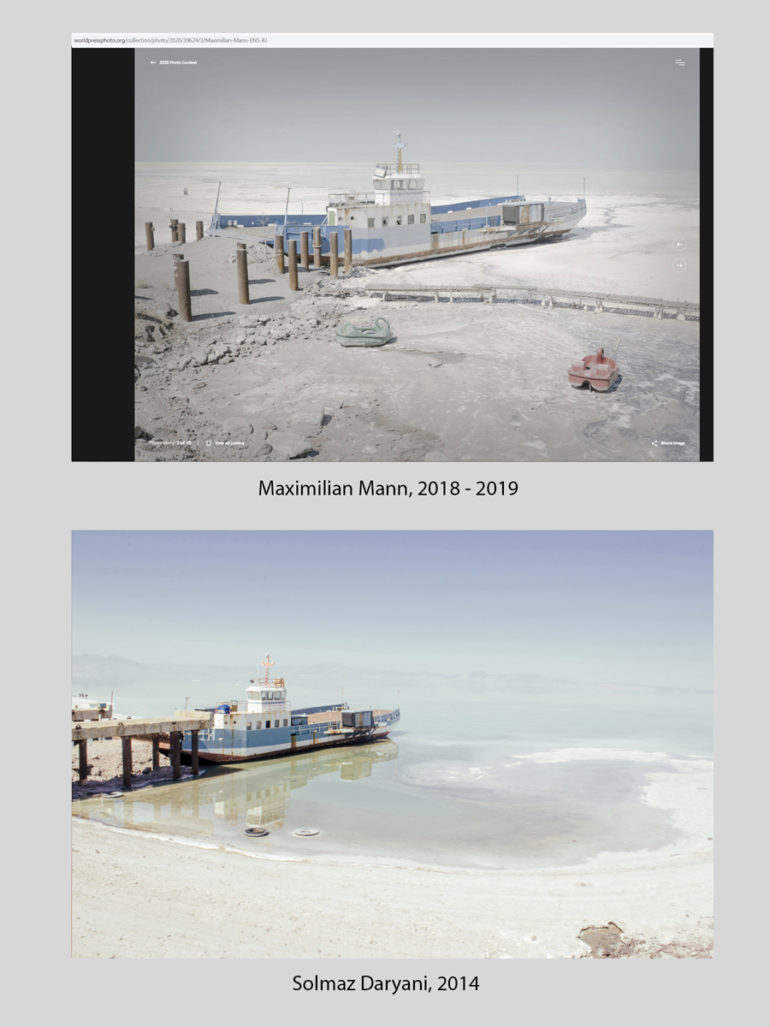
There’s certainly some cross over in the images. More so in the photographs of the woman holding the selfie stick and the man in his home drinking tea. But is it enough to suggest some form of plagiarism has taken place?
World Press Photo Nominee Comment
We reached out to Mann to ask his take on the situation:
“I thoroughly researched my documentary project on Lake Urmia. During my research, I also encountered the work of Solmaz Daryani along with other photographic works by Ebrahim Noroozi, Newsha Tavakolian, Hamed Nazari, Ali Hamed Haghoust, Jalal Shams Azaran, Philipp Breu, Hossein Fatemi, Jalal Shamsazaran and Aletheia Casey.”
– Maxmillian Mann
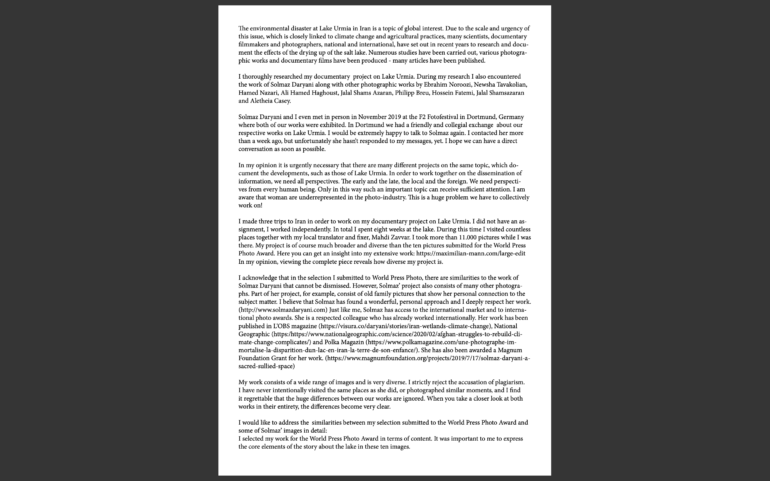
He continues:
“I acknowledge that in the selection I submitted to World Press Photo, there are similarities to the work of Solmaz Daryani that cannot be dismissed.”
“…I strictly reject the accusation of plagiarism. I have never intentionally visited the same places as she did, or photographed similar moments, and I find it regrettable that the huge differences between our works are ignored. When you take a closer look at both works in their entirety, the differences become very clear. “
– Maximillian Mann
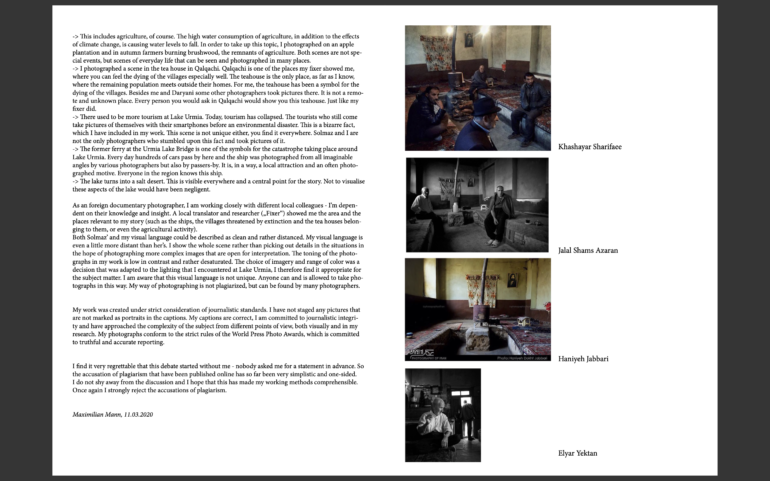
Who’s Right?
Personally speaking, I think we have to be very careful before we go public about the work of another photographer. If I’m Daryani, would I raise an eyebrow? Sure I would. But to take it to the next step and go public about the matter is a whole new level.
Here’s something one should ask before suggesting a photographer took their concept directly and made it their own: Is there a chance that I’m wrong? The answer is almost always going to be yes. Of course, there’s a chance you’re wrong. But in today’s world, as soon as you go public, you taint the reputation of the photographer. And if you are wrong, and this is just a simple case of coincidence (which happens in photography all the time) then all you have achieved is potentially staining the career of another hardworking photographer.
And let’s say you are right. And your work was copied; what do you achieve? WPP is not going to put your series in the final shortlist. Nor will your work be pushed into the spotlight and celebrated by many far and wide. At best, you will like you have called someone out and feel satisfied that justice was done.
But in this case, there’s not enough to say either way what the truth is, and sometimes it best to take the word of the photographer at face value. Head on over to the original blog post and let us know your thoughts.
All images are screenshots.


